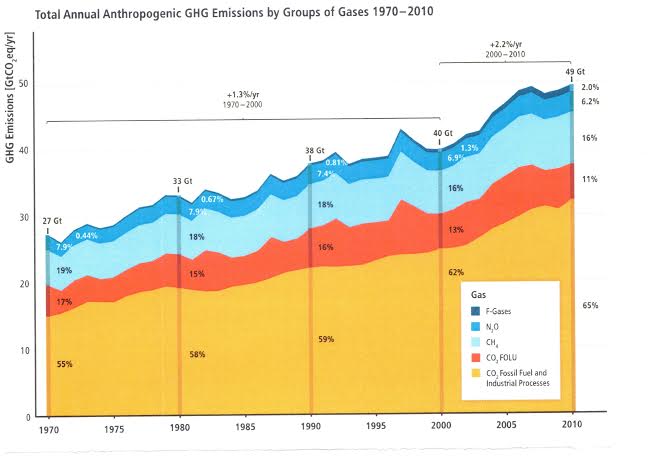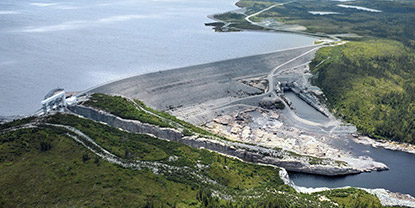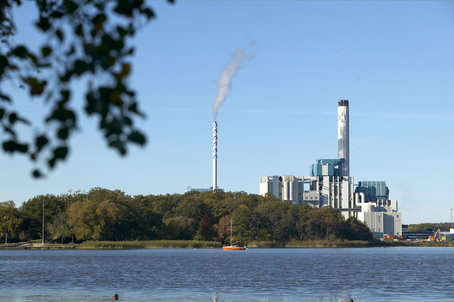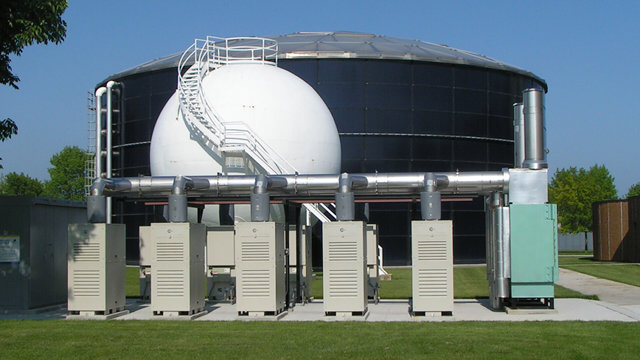Energy efficiency as well as the “dark green” renewable energy of wind and solar are the best sustainable options to reduce CO2. However, if urgent CO2 reduction is the focus, one must not lose sight of additional options.
In 1988 United Nations and World Meteorological Organization created the Intergovernmental Panel on Climate Change (IPCC). IPCC produces reports that support the United Nations Framework Convention on Climate Change (UNFCCC), which is the main international treaty on climate change. IPCC released its fifth report in April this year. The report analyzes trends in greenhouses gases and identifies “mitigation pathways and measures in the context of sustainable development”.
The report, which was produced by reportedly 1250 international experts and supported by 194 countries, concludes that it should be possible to limit the warming to “only” 2 Centigrade increase compared to pre-industrial levels. The 2 C increase is by many scientists are seen as the “safe upper limit” for global warming. Even so to achieve this goal will require very strong measures globally.
Anthropogenic (man-made) greenhouse gases (GHG) is predominantly, 76 %, carbon dioxide (CO2). About 16 % is methane (CH4). The relative “strength” (ability to trap heat in the atmosphere) of the different GHG is expressed in Global Warming Potential (GWP). CO2 has a GWP of 1, while CH4 has a GWP of 21. In other words CH4 is pound for pound 21 times more powerful GHG than CO2. A major concern with growing global temperatures is that melting arctic ices and shrinking areas of permafrost will release very large amounts of methane now “trapped” in the frozen soil. If that happens, it may accelerate global warming, which is one reason why keeping warming to 2 C is considered so critical.

From 2014 IPCC report: Annual anthropogenic GHG emissions. CO2 FOLU refers to CO2 emissons from forestry and other land use. F gases refer to fluorinated gases covered under the Kyoto protocol.
IPCC has found with what they define as high confidence that 78 % total anthropogenic GHG emissions 1970 – 2000 are due to CO2 emissions from fossil fuel combustion, industrial processes, forestry and other land use. This trend has continued during the last decade. About 25 % of anthropogenic CO2 comes from (electric) power plants, 19 % from industrial processes and 13 % comes from transportation.
To reduce CO2 energy efficiency as well as the “dark green” renewable energy of wind and solar are the best sustainable options. There are also additional renewable energy solutions as well as energy efficiency on the supply/power generation side.
Among renewable energy sources hydro power is presently by far the biggest one. Surprisingly many State renewable portfolio standards (RPS) exclude all hydro or the portion of hydro coming from so called “large hydro”. Generally the distinction between “small hydro” and “large hydro” is that the latter category refers to hydro generated from rivers which have been dammed. Nevertheless, small or big hydro it is renewable energy. Yes there are serious environmental and social aspects when building dams and flooding areas. Filling the reservoir releases CO2 and small amounts of CH4. It has been studied and the main conclusion is that at temperate latitudes these emissions are temporary and peak two to four years after the reservoir is filled and then gradually decline. Compared to natural gas power plants hydropower generation, on average, emits 35 less GHG gases and about 70 times less than a coal-fired generating station.
Additional advantages of hydro are the low cost as well as hydro being a large scale storage, which enables more intermittent renewable sources such as wind and solar to be integrated to the electric grid. In fact access to hydro power from Norway and Sweden has been instrumental for Denmark to have up to 30 % of their power generated by wind mills.

Hydro Quebec (HQ), one of the largest electric utilities in the world with an installed capacity of 36 000 MW, produces 98 % by hydro. At 6.87 cents per kWh Montreal residents enjoy some of the lowest electricity prices in North America. At the same time (2013) HQ could report a net result of $2.9 billion. HQ exports about 15 % to Ontario, New Brunswick, New England and New York.
Biomass is another opportunity to reduce CO2. Biomass is “carbon neutral” and therefore is characterized as “light green”. One interesting use of biomass fuels such as wood pellets is to substitute coal in power plants. For example in Sweden many cogeneration power plants for district heating use biomass as the primary feedstock.

Combined heat and power plant (CHP), Västerås, Sweden. The plant’s six units produce 695 MW of electric power and provide district heating about 150 000 local residents. 85 % of the feedstock is biomass.
In terms of CO2 from nuclear power plants there are none! Germany is in this respect a reverse illustration of this fact. In spite of its massive support of wind and solar, the hard reality during the last three years emissions of CO2 have increased due to nuclear power being replaced mainly by power from brown coal power plants. However going forward nuclear power has its set of challenges. For example here in the US long-term handling of the nuclear waste has yet to be resolved. The biggest challenge is probably the high costs for new nuclear power plants.
All fossil fuels emit CO2. Consequently, when using fossil fuel name of the game is efficiency. State-of-the art coal power plants are in the low 40 %. Most of the coal fired power plants are in the lower to mid 30 %. Natural gas fired combined cycle gas turbines (CCGT) reach 60 % electric efficiency. Thus if a CCGT replaces a coal fired power plant it means almost a 50 % CO2 reduction. In the US the on-going transition from coal to natural gas results in substantial reductions in CO2. For example in PJM Interconnect, which is the Regional Transmission Organization (RTO) serving 13 States and District of Columbia with over 60 million people, from 2005 to 2013 CO2 dropped 15 %, from 1290 to 1090 pounds per MWh (megawatthour). The reductions are strongly correlated with the decrease of coal and increase of natural gas.
When using fossil fuel a great opportunity to reduce CO2 is combined heat and power (CHP) as well as combined cooling, heat and power (CCHP). Using the exhaust heat from the power generator for heating and/or cooling one can reach 70 – 80 % thermal efficiency. There are even cases of close to 90 % thermal efficiency. CHP/CCHP can be applied both large scale, for example district heating, as well as small scale as distributed generation.

Sheboygan (Wisconsin) Regional Waste Treatment Facility. 10 Capstone 30 kW and 2 Capstone 200 kW microturbines fueled by biogas from the anaerobic digestion of the wastewater treatment process. The microturbines with cogeneration (CHP) have the ability to provide 90 % of the electric energy and 85 % of the heat requirements annually.
Distributed CHP/CCHP is very suitable for deployment in the so called commercial sector (hotels, schools, hospitals, warehouses etc.), since the sites represent both power as well as heat/cooling loads.
One of the more intriguing future distributed generation developments could be to combine a high efficiency fuel cell like solid oxide fuel cell (SOFC) with a microturbine. Such a distributed combined cycle fuel cell/microturbine may reach up to 80 % electric efficiency! If it also could be accomplished at a cost lower than $1500 per kW, it could be a game changer.
In summary, if CO2 reduction is the priority, it helps to recognize that for electric power generation there is a portfolio of options in several shades of green. They all can contribute to reduce CO2.